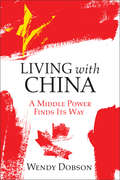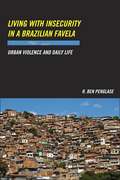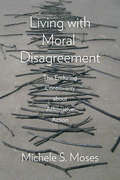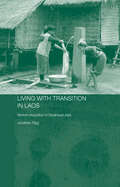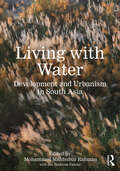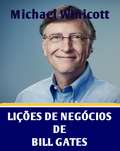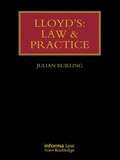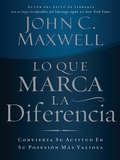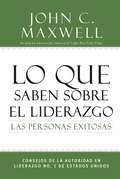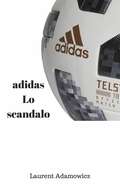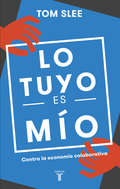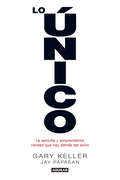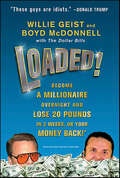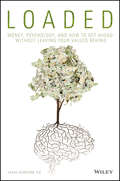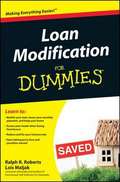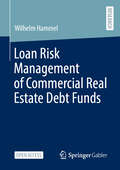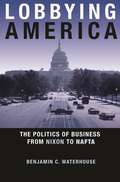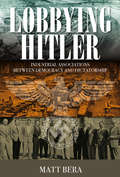- Table View
- List View
Living with China: Finding a Middle Power's Middle Way
by Wendy DobsonLiving with China makes the case to Canadians to adopt a forward-looking China strategy that recognizes forty years of successful reforms as foundations of President Xi Jinping’s ambitious long game to 2049, the centenary of the founding of the People’s Republic. Looking forward, market reforms will be key drivers of China’s long-term growth yet Chinese policy is ambivalent about the potential dangers of spontaneous market forces undermining the Party’s central goal of political stability. These tensions are pointed out in the book’s early chapters that outline what Canadians need to know about the Chinese economy. Getting the foundations right by growing at sustainable rates and dealing with unproductive state-owned enterprises; promoting innovation as a future growth driver and modernizing the fragile financial system are all works in progress where tensions between ‘plan’ and market forces are apparent. Two chapters also examine how Chinese enterprises are going global through direct investments and participation in the dynamic but troubled Belt and Road Initiative. Urging Canadians to up their game with a China strategy takes place in an environment of rising tensions over trade and technology, evident in negotiating the ‘new NAFTA’ with Americans and doing business with Huawei, the China-based telecommunication giant. Living with China is one of the first comprehensive volumes to be published in Canada on a forward-looking Canada-China strategy. The recommended strategy includes more leadership from top officials, building a Canada brand, strengthening our international human capital, addressing security issues and negotiating bilateral trade and investment liberalization. The book also points out the importance of addressing such key issues as intellectual property protection, cybersecurity and discussing value differences such as respect for individual rights.
Living with Environmental Change: Waterworlds
by Kirsten Hastrup Cecilie RubowClimate change is a lived experience of changes in the environment, often destroying conventional forms of subsistence and production, creating new patterns of movement and connection, and transforming people’s imagined future. This book explores how people across the world think about environmental change and how they act upon the perception of past, present and future opportunities. Drawing on the ethnographic fieldwork of expert authors, it sheds new light on the human experience of and social response to climate change by taking us from the Arctic to the Pacific, from the Southeast Indian Coastal zone to the West-African dry-lands and deserts, as well as to Peruvian mountain communities and cities. Divided into four thematic parts - Water, Landscape, Technology, Time – this book uses rich photographic material to accompany the short texts and reflections in order to bring to life the human ingenuity and social responsibility of people in the face of new uncertainties. In an era of melting glaciers, drying lands, and rising seas, it shows how it is part and parcel of human life to take responsibility for the social community and take creative action on the basis of a localized understanding of the environment. This highly original contribution to the anthropological study of climate change is a must-read for all those wanting to understand better what climate change means on the ground and interested in a sustainable future for the Earth.
Living with Impaired Vision: An Introduction
by Anne Yeadon Dava GraysonBlind and visually impaired people: active, concerned about their jobs, their families, their communities, obtaining a good education, discovering interesting ways to use their leisure time, and above all, as different from one another as any other group of people who happen to have one characteristic in common. Today there are visually impaired people in every major area of employment from professional occupations to technical and clerical work. There are blind lawyers and college professors and insurance salesmen and social workers, blind typists and switchboard operators, auto mechanics and chemical engineers.
Living with Insecurity in a Brazilian Favela
by R. Ben PenglaseThe residents of Caxambu, a squatter neighborhood in Rio de Janeiro, live in a state of insecurity as they face urban violence Living with Insecurity in a Brazilian Favela examines how inequality, racism, drug trafficking, police brutality, and gang activities affect the daily lives of the people of Caxambu. Some Brazilians see these communities, known as favelas, as centers of drug trafficking that exist beyond the control of the state and threaten the rest of the city. For other Brazilians, favelas are symbols of economic inequality and racial exclusion. Ben Penglase's ethnography goes beyond these perspectives to look at how the people of Caxambu themselves experience violence Although the favela is often seen as a war zone, the residents are linked to each other through bonds of kinship and friendship. In addition, residents often take pride in homes and public spaces that they have built and used over generations. Penglase notes that despite poverty, their lives are not completely defined by illegal violence or deprivation. He argues that urban violence and a larger context of inequality create a social world that is deeply contradictory and ambivalent. The unpredictability and instability of daily experiences result in disagreements and tensions, but the residents also experience their neighborhood as a place of social intimacy. As a result, the social world of the neighborhood is both a place of danger and safety.
Living with Moral Disagreement: The Enduring Controversy about Affirmative Action
by Michele S. MosesHow to handle affirmative action is one of the most intractable policy problems of our era, touching on controversial issues such as race-consciousness and social justice. Much has been written both for and against affirmative action policies--especially within the realm of educational opportunity. In this book, philosopher Michele S. Moses offers a crucial new pathway for thinking about the debate surrounding educational affirmative action, one that holds up the debate itself as an important emblem of the democratic process. Central to Moses's analysis is the argument that we need to understand disagreements about affirmative action as inherently moral, products of conflicts between deeply held beliefs that shape differing opinions on what justice requires of education policy. As she shows, differing opinions on affirmative action result from different conceptual values, for instance, between being treated equally and being treated as an equal or between seeing race-consciousness as a pernicious political force or as a necessary variable in political equality. As Moses shows, although moral disagreements about race-conscious policies and similar issues are often seen as symptoms of dysfunctional politics, they in fact create rich opportunities for discussions about diversity that nourish democratic thought and life.
Living with Transition in Laos: Market Intergration in Southeast Asia (Routledge Contemporary Southeast Asia Series #Vol. 5)
by Jonathan RiggLaos - the Lao People's Democratic Republic - is one of the least understood and studied countries of Asia. Its development trajectory is also one of the most interesting, as it moves from state, or perhaps more appropriately subsistence, to market. Based on extensive original research, this book assesses how economic transition and marketisation are being translated into progress (or not) at the local level, and at the resulting impact on poverty, inequality and livelihoods. It concludes that the process of transition in fact contributes to the growth of poverty for some people, and shows how people manage to cope in very unfavourable circumstances.
Living with Water: Development and Urbanism in South Asia
by Mohammed Mahbubur Rahman Md. Nawrose FatemiLiving with Water explores the perennial, dynamic relationship between water and the built environment in South Asia. This interdisciplinary survey of the unique urban and ecological landscapes of the region presents a diverse selection of cities and projects, and offers practical, contextual strategies for the design and protection of these sites against emergent impacts of climate change and population growth. Water resources in South Asia are some of the most vulnerable to the effects of global warming. In the many historic urban centres that have grown over time along the rivers and waterfronts of the region, deteriorating water systems and rapid population expansion have contributed to problems such as water insecurity, exposure of built structures to weather damage, floods, and erosion. Case studies drawn from Bangladesh, India, Pakistan, and Sri Lanka illustrate a range of contemporary and traditional approaches to living with water within the ecosystems, floodplains, wetlands, waterfronts, river systems, and water networks of the region. Chapters authored by architects, planners, historians, sociologists, geographers, and environmentalists combine insights into analytical methods and processes of urban planning and development, with critical attention to the importance of cultural heritage, vernacular construction, traditional water systems, and indigenous knowledge in shaping climate-resilient built and natural environments. This context supports resilient ecology and a sustainable approach to building and resource management, offering guidance in the creation of water-sensitive development, integrated urban design, wetlands restoration, and more. Living with Water is an essential read for researchers and professionals in architecture, urban planning, water management, environmental conservation, real estate development, tourism, and local governance, and will appeal to broad range of readers interested in the history, geography, and culture of South Asia.
Liz Claiborne, Inc. and Ruentex Industries Ltd. (Abridged)
by Marie-Therese Flaherty Jill S. DalbyDetails the evolution of a value-creating supplier-buyer partnership. Describes the buyer's (Liz Claiborne) manufacturing and marketing strategy, and details the workings of the firm's relationship with an important Taiwanese supplier of piece goods (Ruentex Industries Ltd.).
Lições de negócios de Bill Gates
by Michael Winicott Miguel GodinhoBill Gates é uma figura emblemática no mundo atual. Ele é uma inspiração para os jovens, e uma lição para os mais velhos. Ele alcançou esses patamares de sucesso e glória que só alguns têm sido capazes de alcançar nas suas vidas. A sua história de vida vale a pena ler e vale a pena aprender a partir dela. Lições de negócios de Bill Gates é um livro que promete contar a história de Bill Gates a partir de uma nova perspetiva: as lições que ele aprendeu ao longo de sua vida. Então você está pronto para aprender com a vida de Bill Gates? Você está interessado em aprender sobre negócios e empreendedorismo? E o mais importante, você está pronto para aprender sobre a vida? Tudo isto e muito mais neste livro fascinante. Aqui está uma previsão do que você vai aprender ... - Como fazer o que você considerar apropriado e não o que os outros esperam que faça. - Como correr riscos calculados e ter sucesso! - Como criar força de vontade para enfrentar as probabilidades e triunfar. - Como melhor aproveitar as falhas inevitáveis da sua jornada. - O Fazer e Não Fazer da carreira de Bill.
Lloyd's: Law And Practice (Lloyd's Insurance Law Library)
by Julian BurlingThe unique features of the Lloyd’s Corporation and Market and their governing rules are complex and are often difficult to navigate even for the most seasoned practitioner. This book provides the reader with a definitive and detailed guide, and is essential for any practitioner dealing with Lloyd’s Insurance. After a brief historical account, the book provides a thorough legal description and analysis of Lloyd’s, which includes topics ranging from the constitution and membership requirements of Lloyd’s, UK and overseas regulation, the processes for placing and underwriting business and handling claims, chain of security, enforcement and disciplinary matters, compensation and the reconstruction and the renewal of the Lloyd’s market between 1990 and 1996. The book will be an invaluable reference tool for insurance practitioners and professionals dealing with Lloyd’s. Julian Burling is a barrister at Serle Court, and has been involved in advising on and implementing nearly all significant legal developments at Lloyd’s in the last 25 years.
Lo que la biblia dice sobre: Finanzas
by Danilo H. Gomes¿Es obligatorio el diezmo? ¿Apostar es pecado? ¿La Biblia da consejos financieros? La colección "De qué dice la Biblia" reúne un conjunto de preguntas con sus respectivas respuestas completamente basadas en las Sagradas Escrituras. Dado que, en el mundo de hoy, toda la verdad contenida en la Biblia ha sido distorsionada a favor de ideales egoístas, esta serie de libros tiene como objetivo conducir a los cristianos por los caminos de la verdad y nada más. Debemos volver urgentemente a la fuente de la sabiduría, es decir, a la Palabra de Dios. La parte de FINANZAS de esta colección plantea 15 preguntas (algunas bastante controvertidas) respondidas con base en la Santa Biblia, sin teorías humanas ni ideas políticas. Transforma totalmente tu visión de las finanzas y sorpréndete con verdades que probablemente no sabías.
Lo que marca la diferencia
by John MaxwellEl experto en liderazgo, John C. Maxwell, cree que la actitud es algo que puede marcar la diferencia en tu vida. En esta ocasión te muestra cómo puedes convertirla en tu mejor cualidad.
Lo que saben sobre el liderazgo las personas exitosas: Consejos de la autoridad en liderazgo No. 1 de Estados Unidos (Successful People)
by John C. Maxwell#1 New York Times bestselling author John C. Maxwell responds to the most popular questions he's received to help readers achieve greater success. John Maxwell, America's #1 leadership authority, has mastered the art of asking questions, using them to learn and grow, connect with people, challenge himself, improve his team, and develop better ideas. In this compact derivative of Good Leaders Ask Great Questions, he gives detailed answers to the most popular and intriguing questions posed to him by people at all stages of their careers, including: · How can you be a leader if you're at the bottom? · How do you motivate an unmotivated person? · How can you succeed with a leader who is difficult to work with? · How do you find balance between leading others and producing? · What gives a leader sustainability? No matter whether you're a seasoned leader or wanting to take the first steps into leadership, this book will provide helpful and applicable advice and improve your professional life.
Lo scandalo adidas
by Iperbole10 Rita Laurent AdamowiczLa storia dell'acquisto di adidas da parte di Bernard Tapie e la sua saga giudiziaria Questo libro è composto di cinque capitoli. I - Negoziazione, documenta come ho scoperto che la società adidas sarebbe stata senza dubbio messa in vendita dagli stessi azionisti e fondatori di famiglia e di come ho pensato che Bernard Tapie avrebbe potuto esserne l'acquirente. Decrive quindi le trattative intraprese a nome di Bernard Tapie Finance (BTF) che rappresentava il mio datore di lavoro, prima di Paribas, e dopo Rothschild & Cie Banque. II - Finanziamento, descrive come l'acquisizione della quota di maggioranza della adidas da parte di Bernard Tapie Finance, nel 1990 necessitasse di essere finanziata e di come avvenne, in ultima analisi, soprattutto attraverso il mio intervento presso le giapponesi Bank of Tokyo et Long Term Credit Bank of Japan. III - Portage, spiega le circostanze nelle quali il gruppo Crédit Lyonnais, attraverso le sue controllate, si è ritrovato proprietario della quota di maggioranza del gruppo adidas nel 1992 e di come ha concepito il piano di finanziamento che gli ha permesso il trasferimento, per quote successive a Robert Louis-Dreyfus e ai suoi soci. Del mandato della Clinvest, controllata del Crédit Lyonnais, alla mia società Waldo SA, a fine 1992, per cercare investitori/azionisti in grado di partecipare a questo trasferimento. IV - Cessione, riferisce della chiusura dell'operazione di portage da parte di Robert Louis-Dreyfus e soci nel 1994 e anche il mandato di rivendita che conferirono alla mia società Waldo SA, nel 1995, per cercare un acquirente della totalità della adidas. V - Quotazione, racconta il successo dell'entrata in borsa del gruppo adidas a novembre 1995 e delle sue conseguenze sulla definitiva chiusura delle precedenti operazioni. Epilogo, è giusto un calcolo, molto approssimativo, dei profitti realizzati dai vari protagonisti. Notate a questo riguardo che, per
Lo tuyo es mío: Contra la economía colaborativa
by Tom SleeEl primer libro que demuestra que la llamada economía colaborativa -con empresas como Uber o Airbnb- tiene muy poco de colaborativa. Por qué no todo el mundo gana. La idea de economía colaborativa se nos ha contado como una forma alternativa a la economía convencional que no solo resulta más sostenible sino que además permite al individuo convertirse en un microemprendedor con mayor control de su vida. Pero esta nueva ola de empresas está en realidad financiada y dirigida por capitalistas de la más vieja escuela. Tom Slee muestra cómo la economía colaborativa extiende las más duras prácticas del libre mercado a áreas de nuestras vidas previamente protegidas, y ofrece la oportunidad a unas pocas personas de enriquecerse perjudicando a su comunidad y empujando a individuos vulnerables a asumir riesgos insostenibles. Basado en una brillante investigación original, repleta de datos y de ejemplos de los más concluyentes, Lotuyo es mío demuestra que tras un lenguaje amigable basado en las ideas de confianza y compartir, se oculta una realidad muy oscura. Reseñas:«En este libro tan lúcido como riguroso, Tom Slee desmantela la fachada de la economía colaborativa y revela las verdades ocultas e inquietantes sobre compañías como Uber y Airbnb. Si usted quiere entender cómo operan las empresas de Internet en realidad, Lo tuyo es mío es el lugar desde donde empezar.»Nicholas Carr, autor de Superficiales. ¿Qué está haciendo Internet con nuestras mentes? «Un libro magníficamente argumentado.»Steven Poole, The Guardian «Una crítica inteligente y punzante a un modelo de negocio sobre el que la gente apenas está empezando a reflexionar. Con gran acierto, Slee lo analiza como un modelo de negocio que se hace pasar por un movimiento.»Robert E. Levine, The Spectator «Slee, un tecnólogo moderado, ofrece un panorama bien investigado de las empresas cuyo valor de mercado ha crecido notablemente externalizando sus costes y burlando las leyes destinadas a proteger a los consumidores. Este libro es clarividente e importante.»Sue Gardner, ex directora ejecutiva de la Fundación Wikimedia
Lo único: La sencilla y sorprendente verdad que hay detrás del éxito
by Jay PapasanLa sencilla y sorprendente verdad que hay detrás del éxito. ¿Alguna vez has pensado que ojalá pudieras dividirte para poder llegar a solucionar todos aquellos asuntos de tu vida que te apremian? Pues tienes que saber que no sería una buena idea. Vivimos en un aluvión diario de correos electrónicos, textos, tweets, mensajes y reuniones que demandan nuestra atención y nos estresan a diario. ¿Y a qué nos lleva todo esto? A resultados mediocres, incumplimiento de plazos, menos dinero y más preocupaciones. ¿Quieres ser más productivo en tu trabajo? ¿Quieres mejorar tu estilo de vida y tu economía? ¿Quieres estar satisfecho con tus rutinas y tener más tiempo para ti? ¿Quieres disfrutar de tu familia y tus amigos? En Lo único Gary Keller y Jay Papasan te muestran que el proceso es bastante sencillo. Siguiendo sus consejos conseguirás: # Ordenar tu mente y tus prioridades # Optimizar tus resultados en poco tiempo # Marcarte metas y cumplirlas # Reducir el estrés y las preocupaciones # Sentirte vital y seguro de ti mismo # Diferenciar lo importante de lo secundario ¿Qué es para ti LO ÚNICO ahora? Reseñas: «Gary Keller nos aconseja hacer pedazos nuestras listas de cosas pendientes y aprender a concentrarnos en una sola cosa en cada momento».Sunday Times «Lo único es más que un libro sobre lo que no se debe hacer, es un libro sobre lo que se debe hacer. Contiene mucha información sobre la productividad y sobre cómo nuestra productividad está ligada a nuestra energía y nuestra salud. Y la buena noticia es que con este libro en la mano podemos empezar a aplicarlo (dejar de trabajar en exceso) desde ya».800ceoread «Dice que puedes ser más feliz (y más productivo) y que tu jefe estará encantado. Las cosas que no están hechas no son importantes o, si importan, otro se puede ocupar de ellas. Del mismo modo, en el hogar también se debe priorizar. Generalmente estamos decididos a hacer lo máximo posible con nuestros hijos y nuestra pareja y el resultado es el estrés debido al tiempo limitado del que disponemos».The Globe and Mail
Loaded!: Become a Millionaire Overnight and Lose 20 Pounds in 2 Weeks, or Your Money Back
by Willie Geist Boyd McDonnellDo you want to be rich? Really rich? Like, Tom Selleck rich? Buy this book and we guarantee a lifetime of obscene wealth---or your money back!*The Florida Panhandle's most renowned top-gun entrepreneurs, The Dollar Bills, will teach you all the tricks of the trade to get rich fast and look great doing it:--Learn "The 5 Cs of Credit" (Cancun, Convertibles, Cognac, Chinchilla Coats, Cuticles)--Invest in exotic pets and floating assets (i.e., cigarette boats, pontoon boats, and other personal watercraft)--Get to know Freddie Mac, and learn why he should be respected (he was the hard-hitting, two-time Pro Bowl safety for the Tampa Bay Buccaneers during the mid-‘80s)Loaded!: Become a Millionaire Overnight and Lose 20 Pounds in 2 Weeks, or Your Money Back shares all these hot tips, and many, many more--from the investing pair with the Midas touch! Turn your life---and your bathroom fixtures---to 24-karat gold with The Dollar Bills!*We're never giving you your money back.
Loaded: Money, Psychology, and How to Get Ahead without Leaving Your Values Behind
by Sarah NewcombBased on decades of research and years of hands-on experience with people from all walks of life, LOADED is a must-read for anyone who finds themselves caught between the desire to thrive financially and the complex emotions and conflicting priorities that money so often brings to our lives. Inside, you will learn to: Check your stories. Pinpoint and change beliefs that hold you back. Choose your strategies. Learn how to align your money with your needs. Cultivate your value. Put your unique resources to use and earn more. Deeply researched, yet written in an approachable, conversational tone, LOADED offers insight into how your personal experiences have shaped your financial attitudes, and how you can build a healthier relationship with money.
Loan Modification For Dummies
by Joe Kraynak Ralph R. Roberts Lois MaljakThe crucial information you need to secure a reliable loan modification and save your homeBehind on your mortgage payments? Worried about losing your home? Don't panic. Loan Modification For Dummies gives you the reliable, authoritative, easy-to-understand guidance you need to apply for and secure a loan modification that lowers your monthly house payment and keeps you in your home. This practical, plain-English guide leads you step by step through the loan modification process, from contacting your lender to applying for a loan modification, evaluating the lender's initial offer, and negotiating a modification that lowers your monthly payment while helping you catch up on any past-due amounts. You'll learn how to communicate with your bank or loan servicer, recognize and avoid loan-modification scams, and find a knowledgeable loan modification specialist, if you choose not to do it yourself.Advice on determining whether you're likely to qualify for your lender's loan modification programGuidance on preparing and submitting a loan modification application that improves your chances of successHelps you figure out a monthly payment you really can affordTips on modifying your loan even when you owe more than your home's current market valueNegotiation advice for securing the best possible terms and lowest monthly paymentResources for contacting your lender, obtaining free or affordable third-party assistance, and getting government agencies on your sideRead Loan Modification For Dummies and start saving your home today.
Loan Risk Management of Commercial Real Estate Debt Funds
by Wilhelm HammelThis open-access publication examines the organisational mechanisms that enable the commercial real estate industry to better withstand economic headwinds and more quickly recover from downturns. With geographic focus on the United Kingdom and Germany, it sheds light on the alternative lending space and explores how debt funds prepare to weather economic turbulence by adopting effective loan risk management practices. Given the significant market share of debt funds and their potential for future growth, the insights provided by industry experts into this rather opaque sector are pertinent and satisfy an urgent need.The publication derives key success factors for effective loan risk management from experience and distils them for practical application. It investigates the corporate structures, processes, cultures and relationships of debt funds. Particular focus falls on the operational practices of loan risk management, and the human resources and infrastructural requirements for success. The findings that are presented are relevant to practitioners, market analysts and academic researchers alike.
Loan Sharp: Get the Business Finance You Deserve
by Rob WarlowAfter the credit crunch and the recession small business owners are in desperate need of finance and yet many have seen their banks turn them away. If this is you, then you may have resigned yourself to the notion that there is nothing you can do ...but you're wrong! The rules of the game may have changed but "Loan Sharp" will show how you can get back in control. Getting a bank to support you can be tough but Rob Warlow outlines the steps you can take to significantly improve your chances of obtaining the business finance you need. In "Loan Sharp" Rob Warlow shares his 25 years of banking experience and lays bare exactly what information banks need from you. Don't be denied finance simply because you don't know what information to prepare or how to present your case. If you are looking for bank finance then make "Loan Sharp" your essential guide.
Lobbying
by Felix Oberholzer-Gee Libby Cantrill Patricia WuDescribes how companies engage the political and legal system and the rules and ethics associated with doing so. Focuses on the U.S. political and legal system, but also seeks to familiarize readers with lobbying norms and structures in the European Union and Japan.
Lobbying America: The Politics of Business from Nixon to NAFTA (Politics and Society in Modern America #99)
by Benjamin C. WaterhouseLobbying America tells the story of the political mobilization of American business in the 1970s and 1980s. Benjamin Waterhouse traces the rise and ultimate fragmentation of a broad-based effort to unify the business community and promote a fiscally conservative, antiregulatory, and market-oriented policy agenda to Congress and the country at large. Arguing that business's political involvement was historically distinctive during this period, Waterhouse illustrates the changing power and goals of America's top corporate leaders. Examining the rise of the Business Roundtable and the revitalization of older business associations such as the National Association of Manufacturers and the U.S. Chamber of Commerce, Waterhouse takes readers inside the mind-set of the powerful CEOs who responded to the crises of inflation, recession, and declining industrial productivity by organizing an effective and disciplined lobbying force. By the mid-1970s, that coalition transformed the economic power of the capitalist class into a broad-reaching political movement with real policy consequences. Ironically, the cohesion that characterized organized business failed to survive the ascent of conservative politics during the 1980s, and many of the coalition's top goals on regulatory and fiscal policies remained unfulfilled. The industrial CEOs who fancied themselves the "voice of business" found themselves one voice among many vying for influence in an increasingly turbulent and unsettled economic landscape. Complicating assumptions that wealthy business leaders naturally get their way in Washington, Lobbying America shows how economic and political powers interact in the American democratic system.
Lobbying Hitler
by Matt BeraFrom 1933 onward, Nazi Germany undertook massive and unprecedented industrial integration, submitting an entire economic sector to direct state oversight. This innovative study explores how German professionals navigated this complex landscape through the divergent careers of business managers in two of the era's most important trade organizations. While Jakob Reichert of the iron and steel industry unexpectedly resisted state control and was eventually driven to suicide, Karl Lange of the machine builders' association achieved security for himself and his industry by submitting to the Nazi regime. Both men's stories illuminate the options available to industrialists under the Third Reich, as well as the real priorities set by the industries they served.
Lobbying at eCab
by Karthik RamannaErin Jones' ridesharing startup in her mid-sized hometown is finally picking up. She's hoping to reach a sustainable scale so that she can sell to a large player such as Uber in a year. But suddenly, she hits political roadblocks - the local Democratic mayor, facing a tough reelection and urged by the local taxi association - calls for more regulation of her business. Erin's board urges her to actively back the opposition Republican candidate through direct PAC giving, a Super PAC, and indirect lobbying. Erin, a lifelong Democrat, is opposed to the Republican on a number of personal issues. She must decide whether and how to engage in this election.
